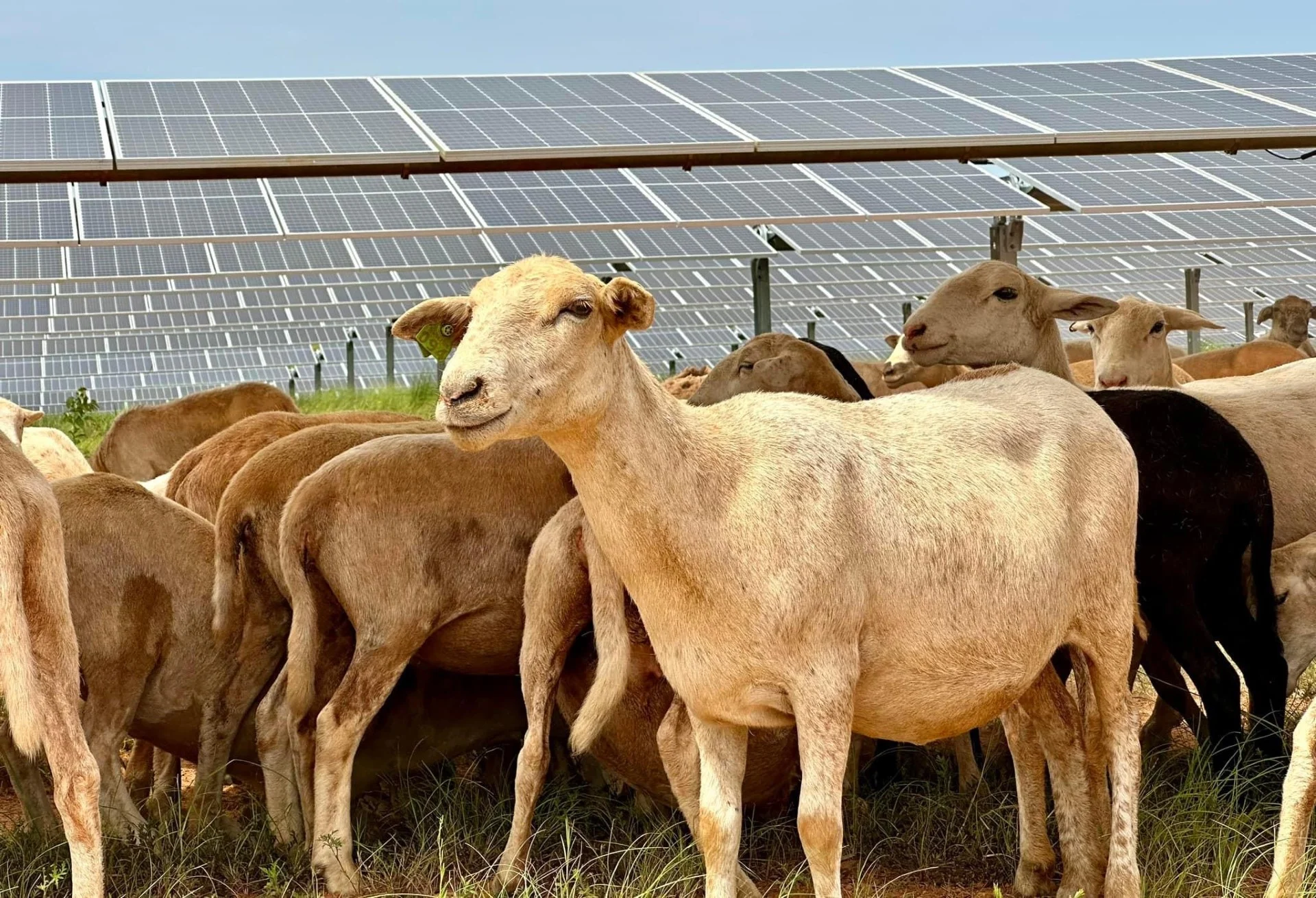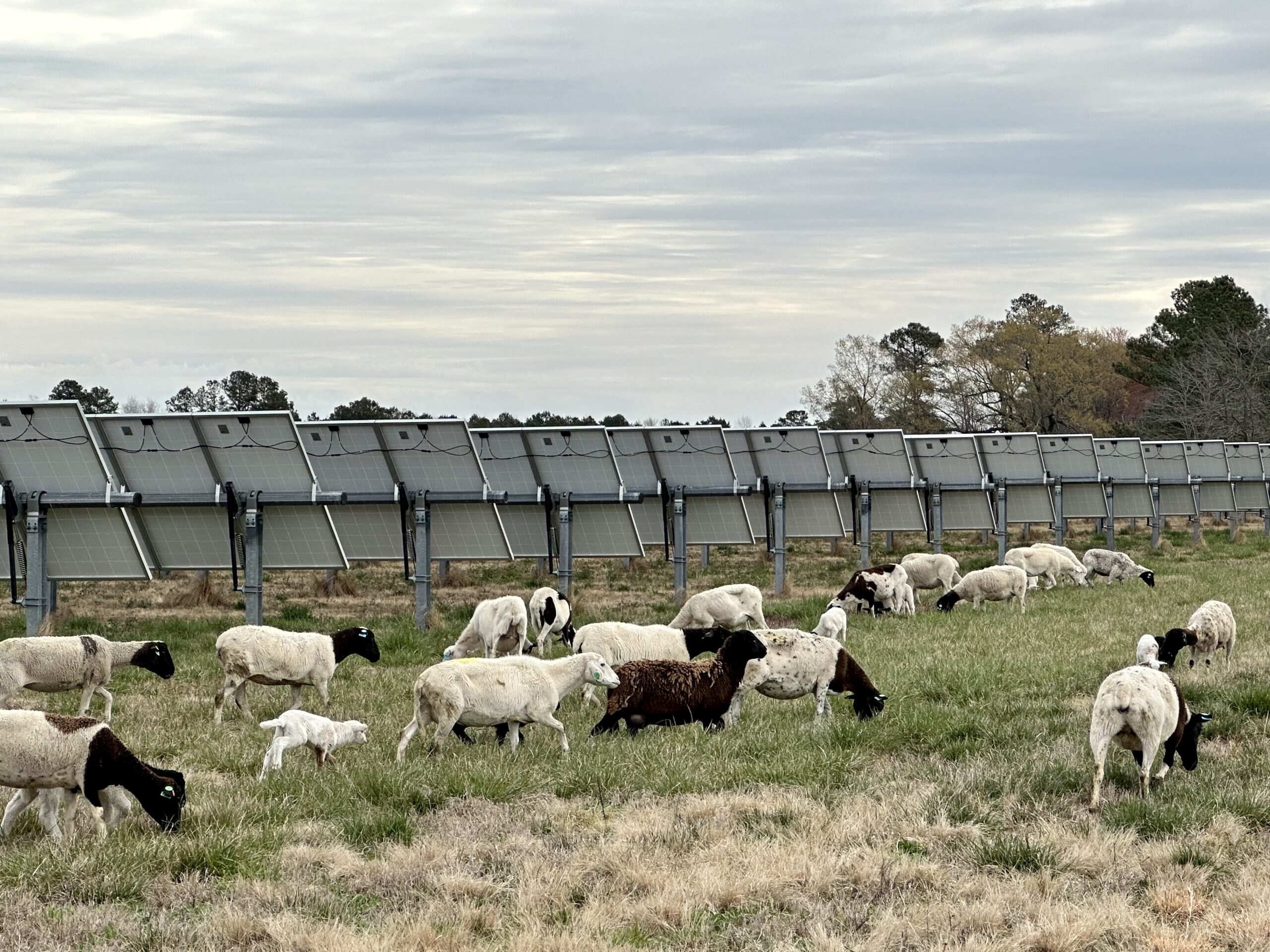Future Trends in Agrivoltaics
By: Jess Gray · March 4, 2024 · 6 min
The future trends in agrivoltaics, which blend agricultural practices with solar energy production, are poised to address some of the most pressing challenges of sustainable development. This innovative approach generates renewable energy and promotes food production, biodiversity, and efficient land use. Here are some anticipated trends in the field of agrivoltaics.

Increased Adoption and Scalability
As the benefits of agrivoltaics become more widely recognized, we can expect a surge in adoption across various scales, from small farms to large agricultural operations. The scalability of agrivoltaic systems will be a key focus, with advancements in modular and adaptable designs to suit different agricultural needs and environments.
Technological Innovations
Technological advancements will drive the evolution of agrivoltaic systems. This includes the development of more efficient solar panels that allow for optimal sunlight penetration, benefiting both energy production and plant growth. Innovations may also involve smart monitoring systems that use AI and IoT technologies to dynamically adjust the positioning of solar panels based on weather conditions, plant growth stages, or energy demand.
Integration of Multispecies Grazing
Integrating multispecies grazing into agrivoltaic systems represents a forward-thinking trend to enhance land use efficiency, biodiversity, and ecosystem health beneath solar panels. By employing different types of livestock – such as sheep, chickens, and cattle – in either simultaneous or rotational grazing patterns, this approach can improve soil health through natural fertilization, manage pests and weeds without chemical inputs, and increase local biodiversity by providing varied habitats and food sources. Multispecies grazing optimizes the dual use of land for renewable energy production and livestock rearing and supports economic sustainability by diversifying income streams and reducing environmental impacts. As agrivoltaics evolve, incorporating multispecies grazing stands out as a promising strategy to achieve a harmonious balance between energy generation and agricultural productivity, paving the way for more resilient and sustainable farming practices.

Diverse Crop Research
Future research will likely expand to include crops suitable for agrivoltaic systems. While initial studies have focused on specific crops like lettuce or potato, there’s a growing interest in exploring the compatibility of a broader range of crops, including those requiring more sunlight. This research will help understand the impacts of shade created by solar panels on different crops and how to optimize crop yield alongside energy production.
Sustainable Water Management
Agrivoltaics can significantly reduce water evaporation from the soil, leading to more efficient water use in agriculture. Future trends include integrating rainwater harvesting systems with agrivoltaic structures to enhance water sustainability further. Such systems could collect rainwater from solar panels for irrigation, reducing reliance on groundwater and surface water resources.
Increased Policy and Financial Support
As the importance of renewable energy and sustainable agriculture grows, policy and financial support for agrivoltaic projects are expected to increase. This might include subsidies, incentives, and research grants aimed at accelerating the adoption of agrivoltaics. Policy frameworks may also evolve to facilitate land-use planning and zoning regulations that support agrivoltaic development.
More Community and Educational Programs
Agrivoltaics offers a unique opportunity for community engagement and education. Future trends could see the establishment of more agrivoltaic projects within community lands and educational institutions, serving as living laboratories for students and researchers while providing local communities access to fresh produce and renewable energy.
Ecosystem Services and Biodiversity
There is a growing recognition of the potential for agrivoltaic systems to enhance ecosystem services and promote biodiversity. Future projects may be specifically designed to provide habitat for pollinators, birds, and beneficial insects, incorporating native vegetation and biodiversity-friendly practices.
Integration with Other Renewable Energies
Finally, we may see agrivoltaics becoming part of larger integrated renewable energy systems, combining with wind, biomass, and hydroelectric power production. This holistic approach can maximize land use for food and energy production, contributing to a more resilient and sustainable energy and agricultural system.
Final Thoughts
These trends highlight the dynamic and innovative future of agrivoltaics as a key component of sustainable agriculture and renewable energy landscapes. As research, technology, and policies evolve, agrivoltaics will be increasingly important in addressing global challenges of food security, energy sustainability, and climate change.
About Jess
Jess Gray is the CEO of Gray’s LAMBscaping, LLC, overseeing the company’s financial management, policy development, logistics, and reporting. As a 2023 Nuffield International Agricultural Scholar, Gray has represented her company in over half a dozen countries, focusing her research on integrating solar energy with livestock grazing.



